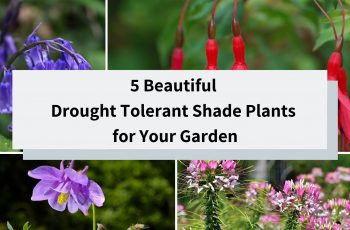Drought Tolerant Shade Plants Are Great for Most Gardens
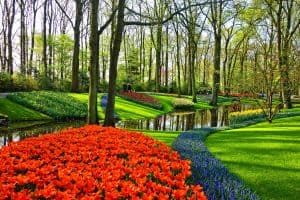 There are usually some shady areas in a garden or a lawn. These are areas you should not ignore since there are numerous beautiful drought tolerant shade plants that you can plant.
There are usually some shady areas in a garden or a lawn. These are areas you should not ignore since there are numerous beautiful drought tolerant shade plants that you can plant.
Bare spots should only be present in a garden if this is something you personally want. Shade should not be the reason for their presence.
The great thing about drought tolerant shade plants is that they can grow in most possible soil conditions. Even when sunlight exposure is limited, the plant will grow and look great.
Your entire yard can be filled with beautiful textures and vibrant hues, even the shaded parts.
If you have areas with a lot of shade in your yard, consider the following plants because they will look great and are really low maintenance.
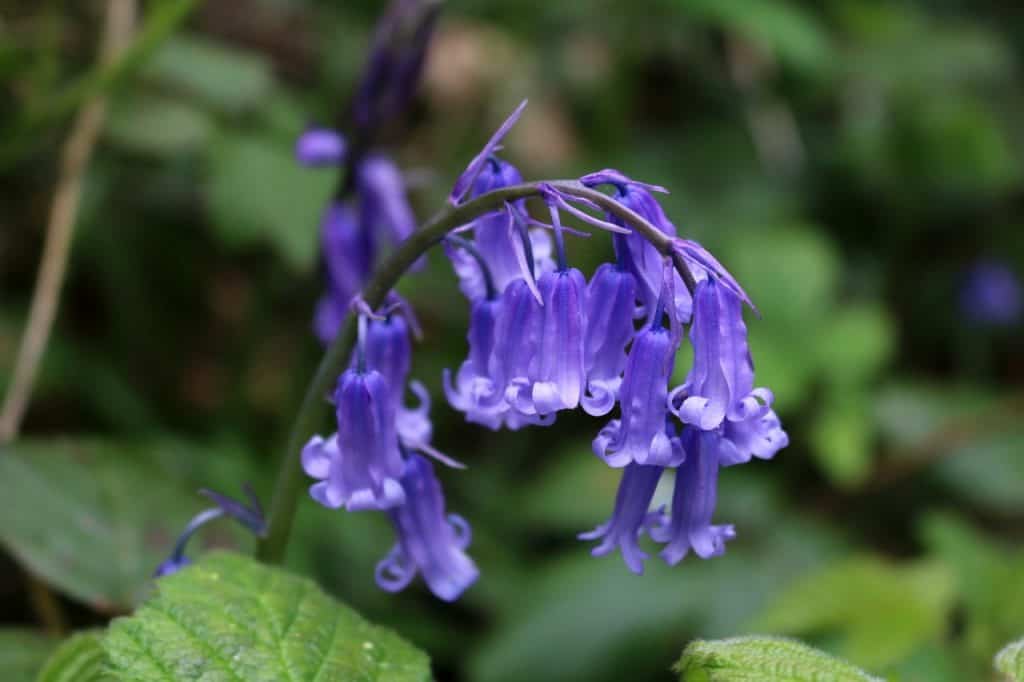 Bluebells
Bluebells
You can easily grow bluebells under shrubs and trees. These are shade-loving plants that easily withstand drought.
You can also grow them in containers but you have to avoid direct sunlight exposure.
Bluebells have unique flowers that look like a bell and their leaves curl at their ends. If enough shade is present, bluebells bloom in really beautiful hues.
These drought tolerant shade plants have to be planted at a depth of 3 inches and at a distance of 4 inches from another plant. They do not require much care.
You just need to add some fertilizer and regularly water them. If there are thinner garden spaces present, you can consider bluebells as they self-propagate really well.
 Spider Flowers
Spider Flowers
Cleome (commonly referred to as Spider Flower) is an adaptable plant that can grow almost anywhere, including shade and full sunlight. Its flowers are white, pink or purple and appear in dense colorful clusters.
The reason why they are known as spider flowers is that the flower clusters have long wisps that look like a spider.
These shade plants instantly stand out but they bloom slower than others after being planted.
Spider flowers need to be well-established in order to boom. After this happens, butterflies will be attracted to the shade garden.
Plant spider flowers at a distance of 18 inches from other flowers and then let them grow. They are drought tolerant, shade resistance, low-maintenance and self-seeding.
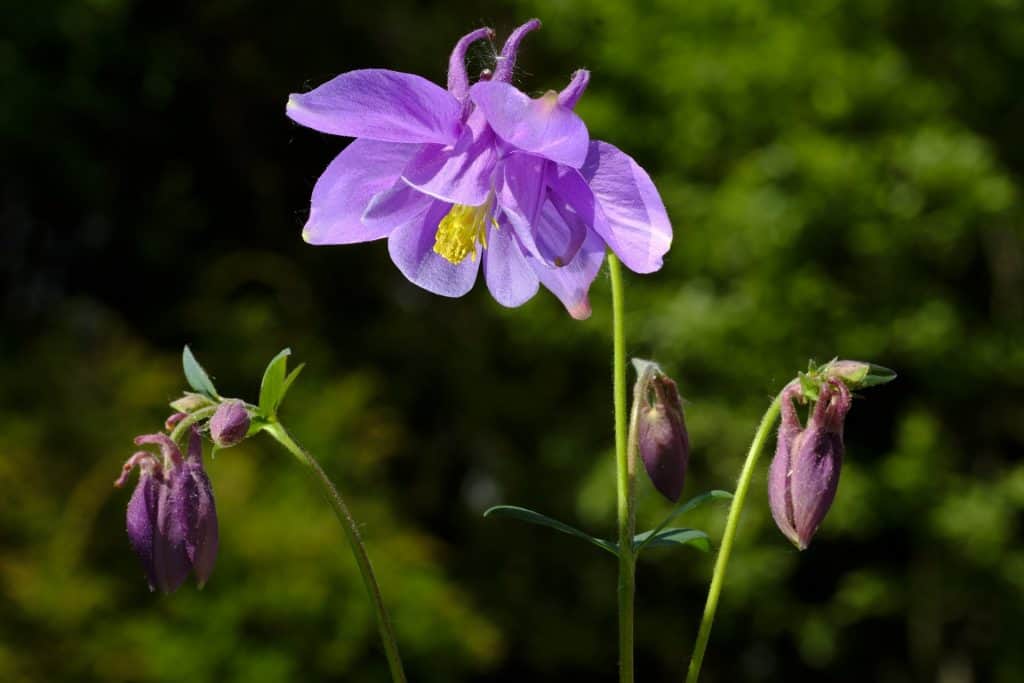 Columbines
Columbines
This is an ideal flower for your shaded garden. It has beautiful blossoms with a highly-distinctive appearance and there are different hues that you can choose from.
Columbines are incredibly easy to grow since they grow in most soil types and will flower even if planted in full shade. Drought tolerance is really high and the plant actually hates full sunlight.
Columbines are biennial plants so do not expect them to bloom during the first year of planting. You can grow them in a container, as long as they are planted 12 inches apart.
Some mulch should be added around stems so the soil remains moist and the root system can be established.
Columbine blossoms have many petal layers. Usually, they have complementary hues. They can be really beautiful but you need to know that bees are attracted to them.
Make sure that you do not plant columbines close to outdoor sitting areas or doorways. Also, the flower can grow tall so you can use them to complement ground covers.
Basically, when you plant columbines you can add extra aesthetic levels to the shade garden.
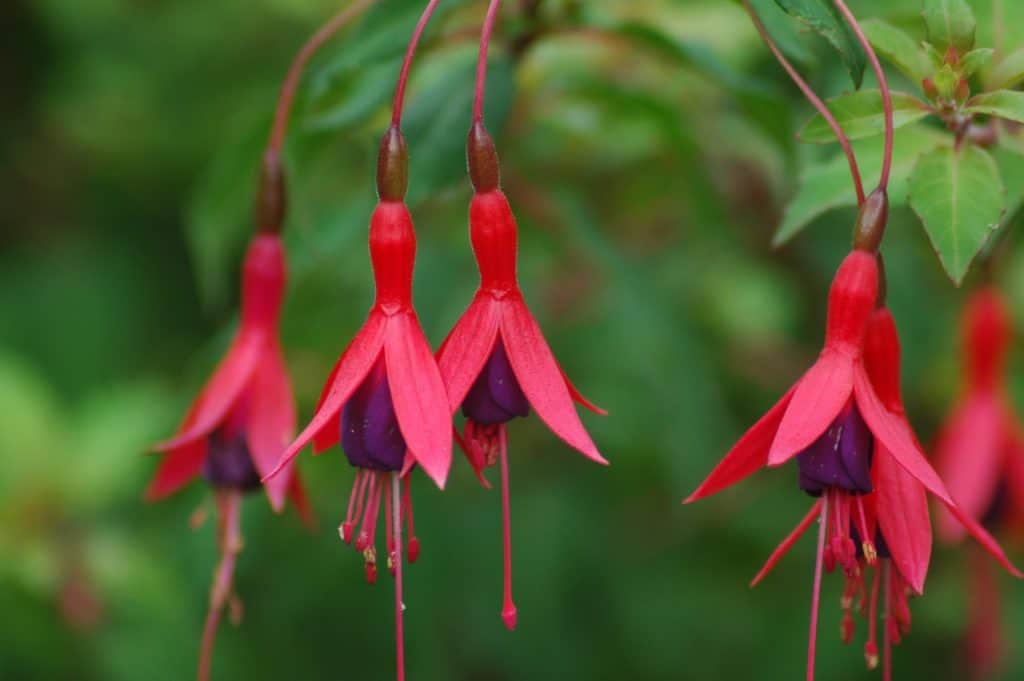 Hardy Fuchsia
Hardy Fuchsia
The hardy fuchsia will bloom all summer long, offering multi-layered, vivid, stunning petals that look great in a shade garden. The beautiful drought-tolerant plant comes in different colors, ranging from deep red to purple.
You can even find hardy fuchsia plants that are two-tone.
Hardy fuchsias can be grown in containers so they are particularly preferred for a patio that is often shaded. Choose different color varieties and place them in hanging baskets to easily create a pleasant patio atmosphere.
You need to plant the hardy fuchsia in a shaded area 2 inches under soil level. The plant loves fertile, moist, well-drained soils.
Some loamy compost should be mixed in for a proper growth environment. Remember that fuchsias do not like cold winds so placement close to shrubs or trees offers the necessary shelter.
 Hellebore
Hellebore
Hellebores are great for a shade garden. They grow higher than 12 inches and create cup-shaped, beautiful flowers that are similar to roses.
Blooming can happen as early as the month of April and it is possible that hellebores bloom during late winter in some climates. In fact, in some regions, the plants are known as evergreens.
They are highly drought-tolerant and thrive in shade.
The maintenance needed for hellebores is as simple as early spring light pruning. The best soil for them is rich so some fertilization will be needed.
During late spring, hellebores attract snails and slugs. You need to fend these off.
Just use coffee grounds for this. Place them around the bases of the plants and snails will stay away. If you cannot use this trick, use copper garden strips.
Other Drought Tolerant Shade Plants To Consider
The five plants mentioned above are wonderful additions to most shade gardens but whenever talking about landscaping, subjectivity appears. It is possible that you would instead love something else.
The good news is that there are actually countless shade plants that have a high drought tolerance to choose from. Some others to consider include:
- Agave – Often used by professional landscapers because of the unusual foliage shape.
- Portulaca – Also known as moss rose, it comes in various colors and needs warmth in order to thrive.
- Lithops – These succulent plants are stone-like and are commonly known as “living stones”. They are particularly great as drought-tolerant houseplants.
- Bougainvillea – A really tough colorful shrub that will thrive in intense and extreme conditions.
- Wallflower – It is appreciated because of their sweet aroma and beautiful colors. These short-lived perennials thrive in the warmer regions. They can be biennials or annuals.
- Lavender Cotton – Needs to be grown in loamy, well-draining soil and full sun but is drought-tolerant.
- Oleander – This tropical shrub always prolifically blooms, producing flowers with beautiful fragrances of various colors like purple, red, white, pink and yellow.

